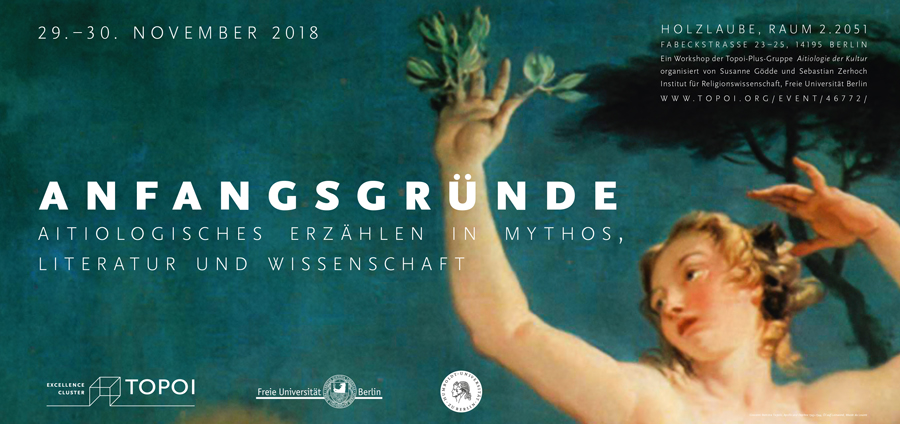Within this project the varieties of aetiological genres, modes and media were systematically explored and described. The aim was to understand and chart the typical functions of aetiologies in their respective historical contexts and explaining them with reference to the diverse ancient and pre-modern civilizations in which they occur.
Research
 Aetiologies explain origins by postulating beginnings, articulating them from the point of view of a given present. Emerging against a background of uncertainty, they come into being when stability appears threatened. Aetiologies address instability, intending to produce or restore stability, by reducing to their origins the beginning of mankind, the creation of the world, the foundation of a new religion, the rise and fall of nations, the consequences of natural occurrences (earthquakes, deluges), the constitution of cities and states or the emergence of culture in its widest sense. Yet despite their constitutive belatedness, aetiological narratives, figurations and performances not only yield mythological or historical understandings of the past, but also offer literary patterns, models and explanatory matrices for social processes of all kinds that are capable both of affirming permanence, stability and continuity while preparing or accommodating change.
Aetiologies explain origins by postulating beginnings, articulating them from the point of view of a given present. Emerging against a background of uncertainty, they come into being when stability appears threatened. Aetiologies address instability, intending to produce or restore stability, by reducing to their origins the beginning of mankind, the creation of the world, the foundation of a new religion, the rise and fall of nations, the consequences of natural occurrences (earthquakes, deluges), the constitution of cities and states or the emergence of culture in its widest sense. Yet despite their constitutive belatedness, aetiological narratives, figurations and performances not only yield mythological or historical understandings of the past, but also offer literary patterns, models and explanatory matrices for social processes of all kinds that are capable both of affirming permanence, stability and continuity while preparing or accommodating change.
The members of this project conducted fundamental research on the semantics and pragmatics of the ancient Greek aition and aitiologia. They also examined the history of the concept in antiquity and in modern scholarship, especially in theories of mythology (Sebastian Zerhoch).
A case study (Susanne Gödde) focueds on the aetiological function of foundation myths. It is striking that many ancient Greek myths (e.g. the founding of Thebes by the Phoenician Cadmus or the usurpation of Argive rule by the Egyptian Danaids) not only seek to stabilize the identity of the newly founded political unit, but also incorporate moments of foreignness and violence into the narrative. The project aimed to discern the generic distinctiveness of this feature (e.g. epic vs. tragic vs. historiographical depictions) and to shed light on possible reasons for this narrative strategy.
